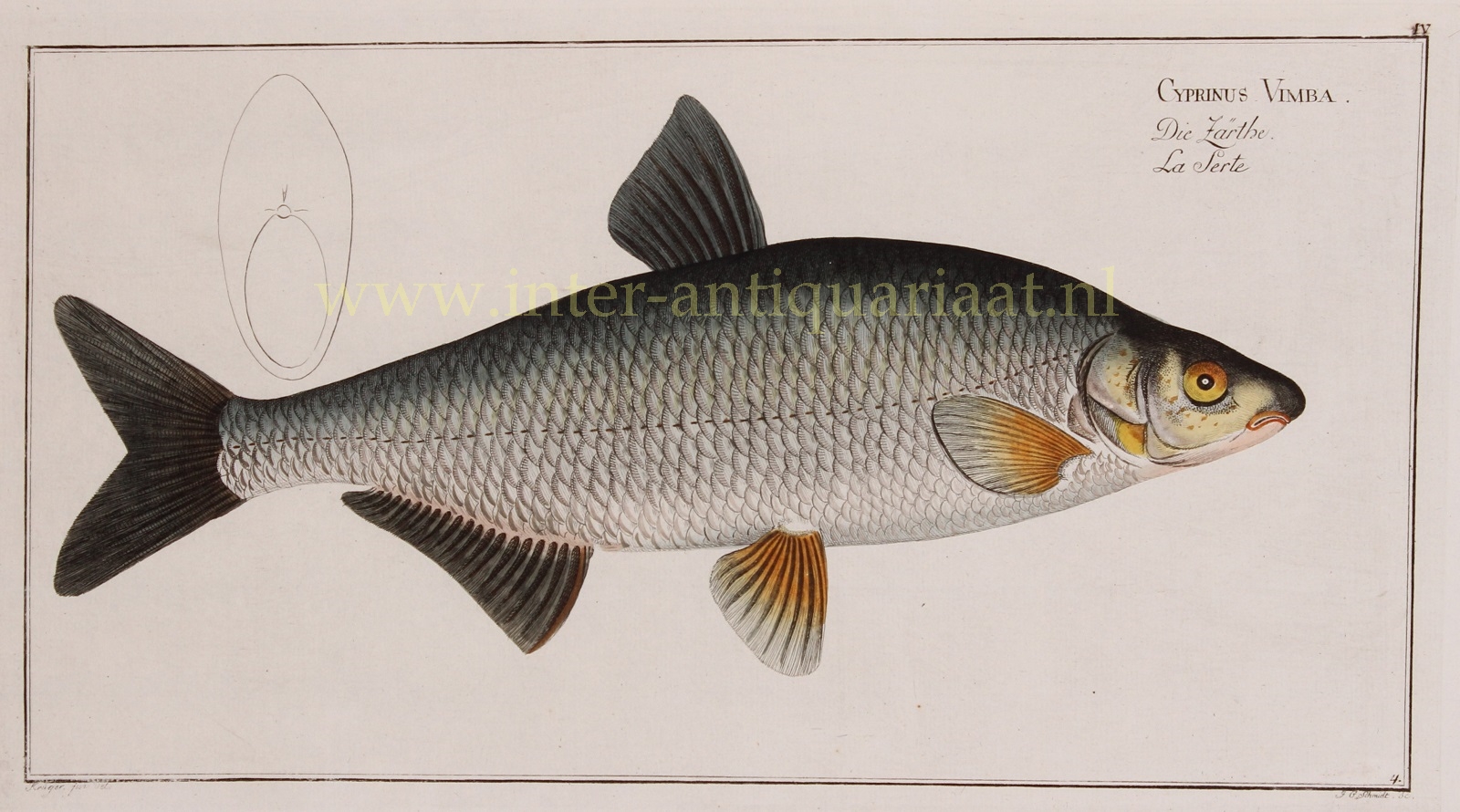THE VIMBA BREAM
“Cyprinus Vimba/Die Zährte/La Serte” (plate 9), copper engraving made by Gabriel Bodenehr after the drawing of Krüger jr, for Markus Elieser Bloch‘s “Allgemeine Naturgeschichte der Fische” published in Berlin between 1782 and 1795. With original hand colouring. Size: 19 x 38 cm.
Bloch devoted a significant part of his life to his “Allgemeine Naturgeschichte der Fische,” which is considered to have laid the foundations of the science of ichthyology. The publication was well-received and widely subscribed, leading to five editions in German and French. Bloch made little or no alteration in the systematic arrangement established by Peter Artedi and Carl Linnaeus, although he was inclined to modify the classification based on the structure of the gills. He found it necessary to add 19 new genera and described 276 species previously unknown to science, many of which were found in remote ocean regions and were popular for their bright colors or unique shapes.
The vimba bream (or vimba vimba) is a freshwater fish species that belongs to the Cyprinidae family. It is native to various river systems and lakes in Europe, and is typically found in fast-flowing, clear waters. The vimba vimba has a silvery-grey or bronze-colored body, with a deeply forked tail and a slightly upturned mouth. It feeds primarily on small invertebrates and algae, and can grow up to 40 centimeters in length. The vimba vimba is considered to be a species of “least concern” in terms of conservation status.
Bloch is considered the most important ichthyologist of the 18th century.
Price: Euro 350,-


